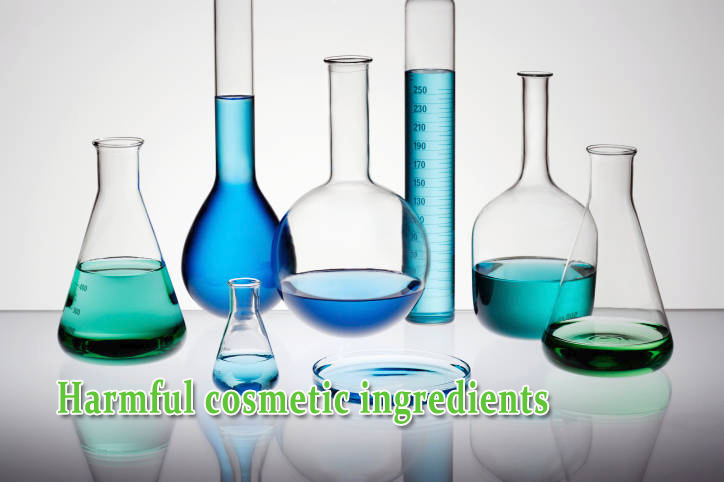
Women are exposed to an average of 168 ingredients per day in their personal care products. Men are exposed to “only” 85, says the Environmental Working Group. Are all those ingredients safe? Hundreds of ingredients are legal in the U.S. but banned elsewhere. Many of the most commonly used personal-care products in the US contain ingredients that are banned elsewhere. In Europe cosmetics are following the REACH regulations, but in the US, the FDA doesn’t really want to regulate the cosmetic industry. The list of cosmetics ingredients to avoid personal care, make up and hair products could be very long. So only ten products are selected.
Here is a short list of ingredients to Keep out of your Personal Care:
1. Imidazolidinyl Urea and Diazolidinyl Urea:
These are the most commonly used preservatives after the parabens. They are well established as a primary cause of contact dermatitis.
2. Methyl, Propyl, Butyl and Ethyl Paraben:
Used as inhibitors of microbial growth and to extend shelf life of products. Have caused many allergic reactions and skin rashes.
3. Petrolatum:
Petrolatum is mineral oil. Mineral oil causes a lot of problems when used on the skin photosensitivity, and it interferes with the body’s own natural moisturizing mechanism, leading to dry skin. Manufacturers use petrolatum because it is cheap solution.
4. Propylene Glycol:
Could be a vegetable glycerin mixed with grain alcohol (both are natural products), but usually it is a synthetic petrochemical. Known to cause allergic and toxic reactions.
5. PVP/VA Copolymer:
A petroleum-derived chemical used in hairsprays and other cosmetics. Considered as toxic, with lungs side effects for sensitive persons.
6. Sodium Lauryl Sulfate:
Synthetic substance used in shampoos for its detergent and foam-building abilities. Causes eye irritations, skin rashes, hair loss, scalp scurf similar to dandruff, and allergic reactions.
7. Stearalkonium Chloride:
Chemical used in hair conditioners and creams. Causes allergic reactions. Stearalkonium chloride was developed by the fabric industry as a fabric softener. Toxic.
8. Synthetic Colors:
Synthetic colors used to supposedly make a cosmetic “pretty”. They are labeled as FD&C Red No. 6 / D&C Green No. 6. Some synthetic colors are believed to be cancer-causing agents. Be careful with synthetic colors.
9. Synthetic Fragrances:
Synthetic fragrances used in cosmetics can have as many as 200 ingredients. Some of the problems caused by these chemicals are headaches, dizziness, rash, hyperpigmentation, skin irritation. The major chemical company are promoting the synthetic fragrances and try to ban the natural one used in traditional perfume industry. Fragrances are everywhere now.
10. Triethanolamine or TEA:
Used in cosmetics to adjust the acidity, and used with many fatty acids to convert acid to salt (stearate), which then becomes the base for a cleanser. TEA causes allergic reactions including eye problems, dryness of hair and skin, and could be toxic if absorbed into the body over time.
Our VB Skin skin care line does not contain any harmful ingredients, paraben free, sulfate free, animal cruelty free.